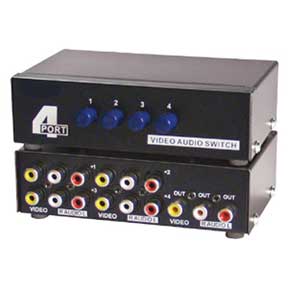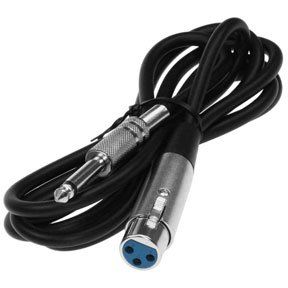SF Cable is an online store selling highest quality cables, components & accessories at best rates.
Sf cable began its business in 2002 with the goal of providing the highest quality cables, components, and accessories (including custom products like fiber optic and copper networking cables and modular adapters) at the lowest prices on the internet delivered with complete customer satisfaction.
SF Cable’s service is unmatched in the industry because we feature a huge inventory of over 8,000 SKUs of cables, components, and accessories ready to be shipped to our customers same day (in most cases) with no minimum orders or restocking fees. Even our custom orders are typically shipped in two to three days. All our products are premium quality at the lowest prices (up to 90% off retail) due to our low overhead and direct imports with no middle men to increase costs to our customers.
But what makes SF Cable completely different is our lifetime technical support. That’s right, call anytime during business hours and get the help you need whether you made your purchase last week, last month, or last year! We also offer a 60 day money back guarantee with a lifetime warranty on computer cables, adapters, and non-electronic products plus live support. Our products are RoHS compliant, environmentally friendly and we work in conjunction with ISO 9001-2000 registered manufacturers to ensure the highest quality merchandise at wholesale costs.
At SF Cable, we offer customer satisfaction and peace of mind with the most advanced form of SSL software available the 128-bit Extended Validation SSL Certificates by Symantec (Verisign Authentication Services) keeping your privacy, personal information and transactions protected.
Remember, our mission at SF Cable, Inc. is to provide you, our customers, with premium quality products at the lowest prices, delivered quickly and with exceptional customer service and support every time!
See Our Products: Power Cord
Ethernet Cables
HDMI Cables and Adapters
Power Strips
and many more..
The Reason We Are Still Talking About Audio Video Cables in 2019
There are many of us out here who only trust cables for connectivity. People can go around with their wireless devices all they like, but we don’t want to have to make sure to charge everything before using it. We just want to start using the device!
Fortunately, cables are not going anywhere. They are mostly required for audio video purposes which is something we need for both entertainment and work.
Primarily, there are two types of these connectors, one type passes a digital signal and the other type passes analog signal. The most popular analog audio connectors are the 2.5mm and 3.5mm connectors.
If we take a trip down memory lane, Sony’s iconic Walkman chose the 3.5mm port back in 1979. This made it famous. And when the technology industry evolved and/or copied the Walkman, everyone put this port on their devices. 20 years after the Walkman, the audio cable and the portable audio industry had become so iconic that Apple used its silhouette for their famous iPod ads.

With this cable, you never have to worry about running out of battery or its large size. All you have to take care of is that they don’t tangle.
The Uses of 2.5mm & 3.5mm Cables for Entertainment:
To carry a stereo signal you need two audio channels. The tip carries the left channel, the ring carries the right channel, and the sleeve is the ground channel. This is specific to the 3.5mm cable. And the 2.5mm cable can be used in phones that need to use headsets, or in smaller phone instruments that were cordless but needed a headset.
The most common use of a 2.5mm connector is for connecting a microphone to devices. When you need to have a separate microphone input and audio output an audio splitter is useful. This splitter is a 2.5mm to 3.5mm cable where the connector is 3.5mm and the other side has two 2.5mm female ports. These can connect a microphone and headphones, or two headphones. This cable comes in handy in case you want an external microphone input on your phone, and/or when you want to use headphones for the audio experience.
While buying audio video cables, you can check for whether it is mono sound or stereo sound, and if it has a microphone built-in. The mono channel connector will only have one ring, a sleeve, and the tip. If you are looking for a stereo sound experience, then the connector should have two rings. The tip carries the left signal, the first ring carries the right stereo channel, the sleeve is ground and the second ring is the microphone. It is in the TRS or TRRS connector format.

The 3.5mm connector can route analog dual channel audio for a device that uses the RCA audio video cable for video input and audio output. While this cable is old, it is most often used in gaming setups, that have a console hooked up to a TV, and more than one controllers attached to the console itself, along with headsets or stereo speakers.
Another use case is when you want to use an aux cable but your car’s music system is older. This requires you to use a 2.5mm to 3.5mm cable to connect your phone or mp3 player to it. An older system will also not have Bluetooth, so this cable is your best option for car entertainment.
That was entertainment; now let’s move on to work requirements.
The Uses of 2.5mm & 3.5mm Cables for Office Work:
If your line of work requires you to be talking on the phone for the better part of your day, you wouldn’t want to be constantly holding a phone. Generally, you are required to use a work phone, which is a corded landline phone. In this case, there are headsets that plug into the 2.5mm female port on the phone itself. You may not have a headset that has a 2.5mm connectors but have the more popular and reliable 3.5mm connector. In this case, you can simply use a male to female 2.5mm to 3.5mm cable. This way you can plug in your existing headset to your landline phone.
Concluding Note:
The audio video cables are in huge demand in the accessory market. There are plenty of accessory makers who make sure to put in ports that they think can provide with faster and smoother experience than Bluetooth or Wireless technologies.
This article is originally posted here; The Reason We Are Still Talking About Audio Video Cables in 2019
If you found this article useful, here are some other articles that may be of interest.
How to Choose the Correct Audio Cable Splitter for Headphones?
Choose the Best Video Extension Cables for Your Home Theater
